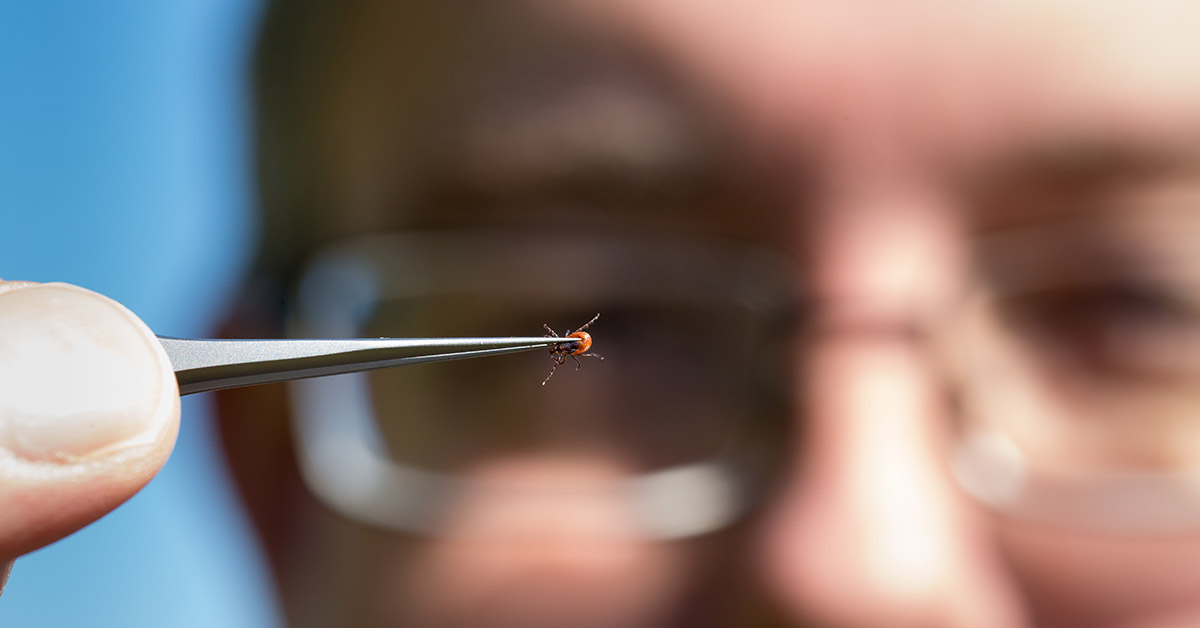Media Contact
Martha Coventry, Senior Editor
coven002@umn.edu
Along with summer comes the tick season in Minnesota. Many ticks can carry bacteria, viruses and parasites that can harm humans, including Lyme disease and Anaplasmosis. According to the Minnesota Department of Health, in 2018, there were 950 confirmed Lyme disease cases and 496 confirmed or probable cases of anaplasmosis in Minnesota.
Jon Oliver with the University of Minnesota School of Public Health answers questions about the outlook for this year’s tick season in Minnesota, types of ticks and where they are most prevalent, and what people should do to avoid ticks and if they find one on themselves.
Q: Will there be a lot of ticks this year?
Prof. Oliver: 2021 is shaping up to be a bad year for ticks but this may change due to ongoing dry weather. A lot of adult deer ticks were active early in the spring and this may correspond to high levels of activity among the very small immature ticks. On the other hand, dry weather and drought conditions will limit tick activity and reduce population numbers, especially for deer ticks. Parts of the state having a very dry season may see fewer ticks later on this year.
Q: What types of ticks are most common in Minnesota?
Prof. Oliver: Deer ticks (Ixodes scapularis) and American dog ticks (“wood ticks”; Dermacentor variabilis) are common in Minnesota and both commonly bite people and pets. Although both species can potentially transmit diseases, deer ticks are more concerning because they are often infected with the bacteria that cause Lyme disease.
Q: Where are ticks most prevalent?
Prof. Oliver: Deer ticks require a refuge with a high humidity level, such as the forest leaf layer, so they are most often found in forested areas. Deer ticks are spreading and becoming more common. They are now found in every forested county in the state. Even in prairie areas, deer carry deer ticks to patches of forested habitat, so people should be vigilant for ticks after visiting any forested area in Minnesota. Adult deer ticks are active in the spring (April through June) and the fall (September through November) when temperatures are above freezing and there is no snow. Immature nymphs are considered more of a disease risk because they are smaller and harder to notice, so they often remain attached and feed for longer. They are mostly active in May through July in Minnesota.
Q: What can people do to avoid getting ticks on themselves and what should someone do if they find one?
Prof. Oliver: Tick-borne diseases are more easily prevented than cured. Insect repellents that contain DEET are also effective at repelling ticks. If you spend a lot of time in tick habitats, it may be worth treating a suit of clothes with permethrin, a repellent/insecticide that works on ticks. The bacteria that cause Lyme disease and other tick-borne diseases usually take hours to enter your body after a tick attaches to feed. Daily tick checks will greatly reduce your chance of getting Lyme disease even if you are bitten.
If you find a tick biting you, use tweezers to grab the tick by its mouthparts where they enter your skin. Pull the tick straight off. Avoid crushing its body. After a tick bite, be mindful of your body’s health. If you develop a rash or flu-like symptoms, visit your doctor and tell him or her about the tick bite.
Q: What are you doing to advance research on ticks?
Prof. Oliver: With the goal of enhancing human health and reducing human exposure to tick-borne diseases, my research focuses on the interactions of ticks and the bacteria they carry as well as the distribution of ticks on the landscape of the Upper Midwest. New pathogens are discovered relatively often in Minnesota’s deer ticks and our lab is working to find out how and where new diseases arise. Ticks also have a varied and diverse microbiome that includes both symbiotic bacteria that help the ticks and pathogens that cause disease. How the pathogens and symbionts interact, as well as how these bacteria affect ticks’ ability to survive and spread, are open questions that we are working to answer. In the future, scientists may be able to manipulate ticks to limit their spread to new places or their ability to carry and transmit pathogens, such as the bacteria that cause Lyme disease.
Jon Oliver is an assistant professor in the University of Minnesota School of Public Health. His areas of expertise include vector-borne diseases, infectious diseases, ticks, mosquitoes and Lyme disease.

